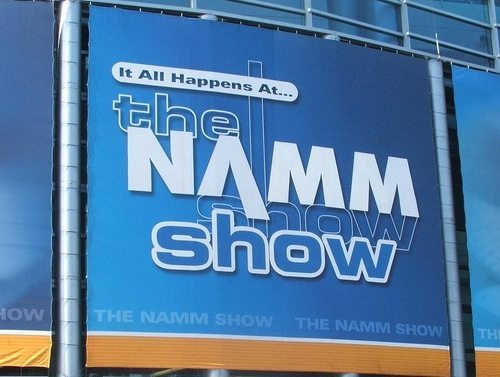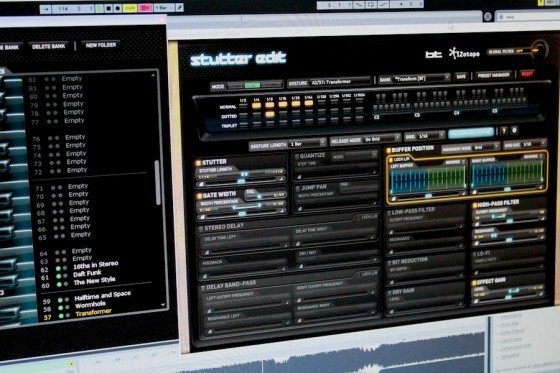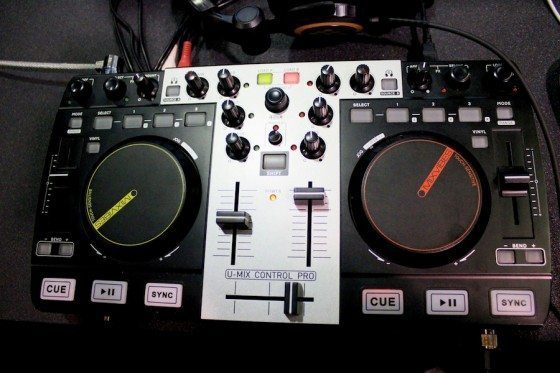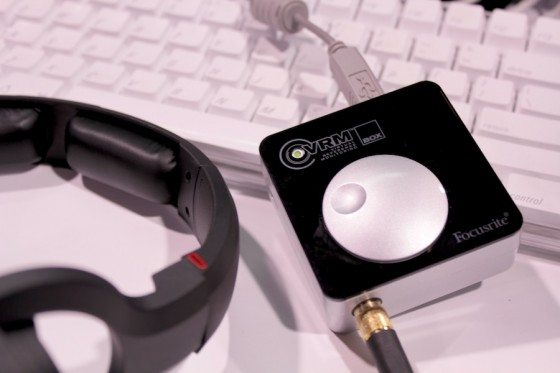via Boing Boing
“Aphid Peeking,” a photograph contributed to the Boing Boing Flickr Pool by reader Aaron Muderick. “These guys are so tiny they … Read More >>

The personal website of Alex Weber
via Boing Boing
“Aphid Peeking,” a photograph contributed to the Boing Boing Flickr Pool by reader Aaron Muderick. “These guys are so tiny they … Read More >>
via Fast Company
Texas Instruments has just outed a chip well ahead of its 2012 availability date, but it’s such a hot ticket item it’s worth … Read More >>
via Singularity Hub
The Singularity may arrive through robots, computers, or bioengineering…or it might be created by Facebook. Ebocloud, the … Read More >>
via GOOD
According to news released early this morning, AOL, the struggling internet behemoth of the 1990s, is going to acquire The … Read More >>
via Gizmodo
div style=”background-color: #B3B3B3; width: 190px; padding: … Read More >>
via Engadget
It’s finally here, folks. The Chronic Dev Team has put out the latest version of greenpois0n that allows you to free your … Read More >>
Thrive PortionWare from IFTF on Vimeo.
Here is the final of the winning presentations from the BodyShock the Future contest for ideas to improve global health that was held last summer.
One of the top 5 winners of the contest was Thrive Portion Ware, a cup and set of plates designed by Sally Ng at the California College of Art to help reduce food intake by 20%. Her presentation is above, and her entry into the contest describes her innovative idea:
“Thrive portion control ware’s cups and plates help steer people to eat 20% less per meal. It works subtly and subconsciously to enable people to eat and drink less. Plate will tip if user places food in the red zone. Control words are on back of plate so users will see “restraint” or “will power” every time they pick one up from a dish rack or cupboard. Cup is quartered off as well, so users drink 20% less no matter what the beverage is. People can consciously consume less. Thrive Portion Ware enables people to do just that.”
Today, Sally sent us an update on her progress in the past couple of months:
“I just finished my last semester a month ago. So I'm working on various projects including Thrive. I made a mock website for it since then, here it is: http://pomo.cca.edu/~sng2/ThriveFinal/. I'm trying to code the Shop section to work correctly, where it will tally up the amount of people who do want to buy it in order to gather some statistics. After I work out that bug, I will be touching it up, move it to a new server instead of my school's so it won't crash from traffic spikes. I’m also finishing up writing the patent to submit.”
We wish Sally all the best as she moves forward with her idea to make portion control easy and beautiful. Stay tuned for more updates on each winner throughout the year as they make progress.
IFTF's current contest, accepting entries until January 31, is the California Dreams Contest. We're asking people, "What is Your Dream for the Future of California?" The winner will receive the $3,000 Roy Amara Prize for Participatory Foresight. Enter your dream today!
He calls himself “The Swagger”, always chillin’ with Gucci bandana and Louis Vitton belt buckle. He’s the hottest shit on the German-speaking web – MONEY BOY – 4 million views on Youtube!!
And here’s what we everyone was waiting for – the SWAGIFY Bookmarklet!!!
Add Money Boy swag to any website!!!! (Drag’n'Drop this into your tool bar to use it on any website)
Original Website: http://tobi-x.com/swagify/
Credits: SWAGIFY Bookmarklett by TBX, GIF help from SteveK und original code von Cornify
Most honey comes from China, where beekeepers are notorious for keeping their bees healthy with antibiotics banned in North America because they seep into honey and contaminate it; packers there learn to mask the acrid notes of poor quality product by mixing in sugar or corn-based syrups to fake good taste.
None of this is on the label. Rarely will a jar of honey say “Made in China.” Instead, Chinese honey sold in North America is more likely to be stamped as Indonesian, Malaysian or Taiwanese, due to a growing multimillion dollar laundering system designed to keep the endless supply of cheap and often contaminated Chinese honey moving into the U.S., where tariffs have been implemented to staunch the flow and protect its own struggling industry.
Much later in her article, Leeder notes that since the honey laundering started in earnest about a decade ago, several countries that produce very little amounts of honey enjoy very large honey exports.
Despite the arrests, the honey industry has been watching suspect import numbers climb.
They are particularly incensed by three countries that, ten years ago, exported zero honey to the U.S., according to Department of Commerce data. India, Malaysia and Indonesia are mysteriously on pace to ship 43 million kilograms of honey into the U.S. by year’s end.
“It is widely known those countries have no productive capacity to justify those quantities,” said Mr. Phipps, the honey markets expert.
The rest of the article, which is well worth reading in full, points out different methods for concealing honey’s origins, strategies for combatting the fraud, and a sort of legal back and forth that seems out of place for what feels like a pretty ordinary food item.
In reading this, though, I was reminded of signals suggesting that honey may not be the only food subject to similar sorts of fraud attempts. For example, in late 2009, a group of students decided to use DNA analysis to try to verify the origins of their foods–and found that 11 of the 66 foods they tested were mislabeled. Not surprisingly, the mislabeled stuff was expensive–sheep’s milk was actually regular old milk, sturgeon caviar was really Mississippi Paddlefish.
And DNA testing–the cost of which keeps dropping–isn’t the only tool at a consumer’s disposal for testing food origins and chemicals. A group of Canadian chemists have developed a little strip–sort of like a piece of paper for testing p.h. levels–to see if a food item contains pesticides, for example.
As of now, most of these stories about food fraud have received relatively little public attention. But it’s interesting to imagine what would happen if stories about honey laundering and the like started gaining traction–and what sorts of reactions it could spur. Certainly, we’d see consumers examining their Florida orange juice, California cheese and so on a lot more closely. And, of course, we’d also see food companies responding by engaging in a lot of desperate marketing to demonstrate the authenticity of their foods. And many more middle men trying to conceal their supply chains.
At some level, I think that scenario is only a matter of when, given that, over time, we really won’t need large governments to invest millions of dollars to track down the origins of our foods. With pesticide test strips, cheap DNA sequencing and the like, the scenario above–of increasing fears of food fraud–may only be a matter of when.

Do horoscopes really all just say the same thing? We scraped & analysed 22,000 to see.
See our completed meta-horoscope chart and make up your own mind.
We’ve also created a single meta-prediction out of the most common words..

How do you gather 22,000 horoscopes? Obviously you could manually cut and paste them from one of the many online Zodiac pages. But that, we calculated, would take about a week of solid work (84.44 hours). So we engaged the services of arch-coder Thomas Winnigham to do a bit of hacking.
Yahoo Shine kindly archive their daily predictions in a simple and very hackable format (example). Thank you! So Thomas wrote a Python script to screen-scrape 22,186 horoscopes into a single massive spreadsheet. Screen-scraping is pulling the text off a website after it’s displayed. Python is a programming language. You can use it to write scripts that only gather the specific text you want. Then you run it multiple times so it mines an entire website.
Well, it’s not quite that easy. Big sites like Yahoo have ‘rate-limiting’ on their servers. That means if you access a page too many times too quickly, it thinks you’re a hacker and deploys all kinds of anti-hacking counter-measures. Initially, Thomas set his scraping speed too high (once every 10th of a second) and his IP got instantly banned from Yahoo for 24 hours. After some experimenting (and more bans), he found that a two second delay between scrapes prevented the defense mechanisms from kicking in. The script was set to run in the background (while we smoked cigars and discussed the empire). 12 hours later, we had our 22,000 horoscopes in a single file!
We can’t share the 9.5MB spreadsheet with you because it’s Yahoo’s copyright. But here are the Python scripts should you feel like recreating the experiment.
https://gist.github.com/776219
https://gist.github.com/776228

So every different type of horoscope got sucked up – career, teen, love, daily overview. Who knew there were so many? It was felt, though, that career & love predictions would have their internal biases i.e. lots of mentions of work, career, love, marriage etc. So we opted to just analyse the generic daily horoscopes for each sign. A total of 4,380 (365 per star sign).
We used an online tool called TagCrowd to find the most common words. I prefer it to Wordle. You’ve got better control over any ‘noise’ in the signal, because you can not only filter common words (“and”, “for”, “is” etc) but also a special ‘stoplist’ of words you’ve chosen.
So we broke down the most common 50 words to see if there are any patterns of unique words. This is what was revealed:

You can see the full data in a Google spreadsheet here.
It struck me that several words in the top 50 – like “someone”, “really”, “quite” – were just qualifiers and not really that revealing. You’d find them in any English word analysis.
So we stripped those kinds of words out (see our stoplist). And lo! A fresh set of unique, revealing and more accurate words appeared in the top words per sign.

Can I just say that I have no personal interest in horoscopes. I don’t know what the various characteristics of each star sign are meant to be. So you’ll have to tell me if any of this corresponds to folklore.
This was the data we used to create our meta-chart. Check out the final image. Or see all the data in this Google spreadsheet.
One more thing though. This analysis appears to reveal something. The bulk of the words in horoscopes (at least 90%) are the same. That’s not a full, proper statistical analysis. (If you are a statistician and you want to do a proper analysis, please get in touch)
The cool thing is, once you’ve isolated the most common words, you can actually write a generic, meta prediction that would apply to all star signs, every day of the year. Here it is.

As ever, I’ve laid out my whole process and all the data here: http://bit.ly/horoscoped.
That way it’s all balanced and you can make up your own mind. Typical Libran!
On Saturday, we bumped into the prolific Mr. Hawtin, a digital DJ pioneer and the guy who originally paved a road for much of our work today. Ironically, January 2011 is the 10-year anniversary of the ground breaking announcement that really kicked off the digital DJ movement. Final Scratch 1, co-developed by John Aqcuaviva and Richie Hawtin. We took a few minutes to talk to Richie on camera, and he got into the above interesting conversation with Ean about the anniversary of DVS, what’s next for him and what’s next for the DJ world.
Check back in with us over the coming days as our team continues to compile video, photos and data into a series of articles on our favorite moments from NAMM.

Jessica Hische has created this lovely flowchart that makes it easier for creatives to decide whether they should work for free or not. As you may have guessed, the answer is “No” for most cases but there are some exceptions to this rule. You just got to love Jessica’s honesty in answers like this:
Did they promise you “exposure” or “a good portfolio piece”?
➔ This is the most toxic line of bullshit anyone will ever feed you.
The flowchart is completely crafted in HTML / CSS and can be translated using Google Translate. You can also download the JPG version or wait for the prints to come.
 Jessica Hische is a Brooklyn based designer, illustrator and typographer — find more of her works on jessicahische.com.
Jessica Hische is a Brooklyn based designer, illustrator and typographer — find more of her works on jessicahische.com.
In what is proving to be a NAMM week bonanza for lovers of hardware effects, Korg’s Kaoss Pad Quad may be the best bang-for-the-buck. You can control up to four effects simultaneously, all via the trademark KAOSS-style touchpad, triggering effects you want via single-button toggles. (In fact, this device reminds me in a good way of the superb but sadly now-defunct Entrancer KPE-1 video device, in that everything is neatly accessible.)
Plug in your input from an external source or use the onboard mic input, then control effects from the touchpad with multi-color LED effects for visual feedback. There are four basic modules – looper, modulation, filter, and delay/reverb – each with variations, so that Korg promises 1,295 combinations. (That’s an utterly meaningless number to me, but I’ll take their word for it.)
There’s also a “freeze” effect for each module, so you can lock its settings in place. Some effects:
All that’s missing, really, is MIDI input – it’s intended as a self-contained device, and any sync will be up to its auto BPM feature or tapping in tempos.
If you’re in my house, you’re not allowed to use the fake vinyl break effect. Sorry, them’s the rules. (Keep them for the next time you need to score an MTV reality show.) But otherwise, this looks useful. And at this price, with this kind of ready-to-play control, the whole device looks pretty irresistible. Korg’s ability to keep churning out KAOSS stuff people love is kind of ridiculous.
Kaoss Pad Quad [Korg]
You’ve just created the design that, more than any other, was the signature of electronic music making in the first decade of the 21st Century. What’s your second act?
Having made the monome grid controllers the biggest design hit in music creation in the last few years, then moved to a farm in upstate New York to do some … farming (really), monome’s Brian Crabtree now and Kelli Cain have made public what’s next. Think really big knobs.
The design makes some sense to me, intuitively, already. Livid tried the obvious solution of combining encoders with arrays in its Code, but having a big cluster of encoders, while interesting, seems that it’d have limited applications. It works for Livid, but given the widespread impact of the monome, you’d expect something more generalized, more universal.
Arc could be that. They’re large, “ultra-high resolution” encoders. The monome sacrificed sensitivity for quantity with an array of on/off toggles; Arc does the reverse. The idea is presumably that you’ll really care about these big knobs. Two- and four-knob versions are promised; the four-knob variant seems like it might have the greatest appeal, depending on the price difference. The visual feedback on the side are “high-density LED rings,” but they also have “variable brightness,” meaning that they could be more visually compelling than is apparent in still photos.
In addition to being knobs, each knob is a push-button. Unlike the monome, it’s hard to see this being the only controller you’d use. It is easy to imagine it used in conjunction with another controller, though, monome or otherwise. I’m imagine that as on the monome, you’ll be able to modify the design to add tilt sensors and the like.
Like the monome before it, the arc makes no sound. It requires computer software and the OSC (OpenSoundControl) protocol in order to control software, connected through a USB port. And so like the monome, you can expect that a lot of its value will be software inspired by the quality of the design and even the high-value construction of the item. If it’s like its predecessor, the arc will be an attractive window through which clever software designers imagine new musical contraptions.
The obvious comparison here is to the humble, US$45 Griffin PowerMate, a single metal control knob that used USB. This promises to have more precise visual feedback and be a whole lot better made and open; on the other hand, anyone who was fond of the PowerMate in theory may be quicker to buy into the notion here. (flight404 aka visual legend Robert Hodgin once did a whole live visual set with an array of PowerMates; he may prove ahead of his time if this catches on.)
Pricing, details, media due later, with “orders and shipping in February.” I can say it’s real; I saw some version on Brian’s workbench.
arc [monome]
I think, having passed on a trip to Anaheim, that readers might like to get hands-on coverage of the Arc, and a serious look at whether the monome’s sequel will live up to the original. Do you agree?
Side note: People I’m talking to are already wondering what you would do with, you know, two big wheels. I refer you to Etch-a-Sketch (two wheels), your car (one big, necessarily high-resolution wheel)… I was initially skeptical of how the monome would work as an instrument with no velocity sensitivity, and was eventually won over by a combination of ingenious software and musicianship by its fanbase. I wouldn’t write off the minimalism of this just yet.
Update: stretta already has an app in the works for the arc. He mentions that in a blog post with an adorable illustration that, aside from being clever, suggests how many people will use this app. See the video after the jump – notice the PowerMate controller in the corner of the video? It’s apparently standing in for an arc. Getting the picture?

Since January is upon us, that can only mean one thing: Winter NAMM and a fresh batch of DJ technology guaranteed to produce buyer’s remorse and gear envy. We’ve got a crack team of writers and photographers embedded deep in the belly of NAMM working hard to bring you details on all the gear, including what’s good, and what’s not.
In this first post, we’ve compiled a master list of new DJ products at NAMM that might pique your interest. Then, in our follow up on Monday, we’ll compile a shorter “Best of NAMM” list, with in-depth videos and details on our favorites.
 Manufacturer: Hercules
Manufacturer: Hercules Manufacturer: Rane
Manufacturer: Rane
NEW CANS IN TOWN


Again, we’ll be posting more NAMM details, including in-depth “Best of NAMM” articles on our favorite new DJ gear. Keep track of when we post new articles by following us on our Twitter or liking DJTT on Facebook.
Dave Smith Instruments Tempest. An all new analog drum machine. Awesome. If you listen carefully the demo goes from all the way from 606 to 909ish with some nice Simmons tom emulation and synth stabs. There are a lot of specs but does it matter? A lot of buttons and analog stuff. $2000. link
Avid Torq 2. I secretly always liked Torq better than Traktor. I don’t know why I’ve keep it a secret. It’s just more fun to use and I like the flat interface a lot. I’m not sure 4 decks is better than two. Can you say tiny things to see in a big display? The new Traq Morph feature “blends music tracks in exciting new ways by intelligently applying audio effects during crossfade.”. That could be cool right? Lastly, the software is decoupled from any hardware so you can use it stand alone or with any controller. $250 link
Akai Synthstation 49. I want my car dash to be an iPad. Just the same let’s make my keyboard interface and sound source and iPad too! It’s from Akai so a few MPC pads are included. This will win or loose depending on quality. link
Alesis Studiodock. Professional audio and MIDI I/O for your iPad. Oh… and composite video out. I’m getting very close to being able to play an entire live show off my iPad! link
Izotope Stutter Edit. I love plug-ins like this. Stutter, a Stutter Matrix, Buffer Tricks, Bit Reduction, Pan, Gate, Delay, Filters and more take normal audio and mess it up. $149 link
Arturia Spark. I’m going to tell you right now that this new drum machine from Arturia won’t sound as good as the DSI Tempest. Your going to pay a lot less though and it does have a super fun TR style roll by sequencer. All drum machines are awesome. All of them. $600. link
Rob Papen Punch. I sense a theme at this year’s Namm. I remember it used to be work making killer electronic drum sounds, loops and patterns. Boy to kids have the toys today! If your not an analog purist Dutch Papen’s new VST punch could be of use to you. Will it compete with products like uToniq? Time will tell. link
MORE UPDATES TO COME. I will be adding things I find worthy to this post as the weekend continues.
Kids today. They just love their Ableton Live and their Rock Band and their alternative tunings and their Live triggers and touch controllers stuck to their far-out new boutique controllers and high-end MIDI guitars.
Starr Labs has a line of MIDI controllers for Rock Band gamers and musicians on a budget, real guitarists (that’ll be the pro MIDI guitarists, not the gaming ones), and a novel new controller designed especially for Ableton Live. We saw their wireless line earlier today, which interoperates with these; here’s them exploring control.
Gaming and serious musicianship have some surprising overlaps here. Look at the new Ztar, the ZS-XPApros, which is a MIDI guitar – complete with advanced features for hammer-ons, sensitivity, and programmable zones – that also can manipulate Ableton Live right out of the box. Triggers are pre-mapped to Live control layouts. Like the game Rock Band, there’s cheery color coding to match what’s on the screen to what’s on the instrument. Unlike the game Rock Band, you’re playing an actual guitar and controlling advanced music software at the same time. (Show that to the next Xbox gamer who thinks they know it all.)
If you don’t play the guitar, there’s also the airPad, a wireless controller for Ableton with pots, X/Y pad, nav control, and 4×4 light-up pads.
The Ztar Z6S-XPA and Z7S-XPA are advanced MIDI guitar controllers with “the industry’s only zero-latency, 6-string x 24-fret touch-sensitive keyed-fingerboard.” (I actually think that’s not hyperbolic; this is the only one I know of.)
Each string trigger has its own tuning, so you get what amounts to a combination between a sophisticated MIDI guitar and an alternative key layout. It’s a controller singularity, as if an alternate-tuning keyboard and a MIDI guitar had a love child.
Specs:
6 Velocity sensitive, Zero latency String Triggers
4-Way programmable Joystick and programmable Mod Wheel
24 fret touch sensitive Ableton Live color-coded fingerboard
Ableton Live control layouts and set-up templates
Ribbon Controller with 2 touch pads (Z7S) / six touch pads (Z6S)
Unlimited String and Fingerboard Tunings
32 Mappable Zones
Programmable Chording System
Arpeggiator & Sequencer
Volume Pedal Port & Sustain Pedal Port
MIDI and USB i/o
The Z6S-XPApro adds six pots.
Scott Caligure has more on the updates to the Ztar.
“The Z6S-XPApro and Z7S-XPApro are newer/updated versions, with improved sensing, latest drivers, multiple sysex ‘layouts’ for various software not only Ableton Live, color coded fingerboard soon to be led-illuminated. We are currently working on the instrument to be a class-compliant device.”
I would call this more like an keyboardaraaytrixocontrollatar. I’m not sure the music this instrument plays has been invented yet. (Microtonal breakcore psychedelia?)
The “Rock Controller” is marketed partly for use with the Rock Band 3 Pro Mode, but it looks to me to be just as practical as a MIDI instrument – maybe even a little more so for some users, as it’s a bit simplified in contrast to the Ztar. With USB and MIDI connections, it’s just as happy to be plugged into your computer as an Xbox or PS3, and Starr are quick to say it’s not a toy. With zero-latency string triggers, a four-way joystick, five-way knife switch, muting, and two pedal ports, it’s still out there controller-wise.
And like the others, it has actual strings (to make absolutely certain this isn’t just a toy). But it might be a more down-to-earth alternative if the Ztar is a little too alien or pricey for you. It’s also a huge leap up in quality and versatility from the (also useful) MIDI guitar controllers designed for the game.
It might seem a bit out of place here, but the airPad is a more traditional Ableton Live controller. It does boast a novel control layout, and it’s wireless, working in the 2.4G ISM band.
It’s well worth a visit to the Starr Labs site; they make an array of controllers and guitar electronics, including some fascinating alternate keyboard arrays. Makers like this make me wish I’d cashed in on some Web startup boom with an inexplicably-successful idea so I could squander part of my fortune collecting these designs. And for someone, I’m sure, they’ll find a real musical place in performance.
What should digital DJing look like? It’s an open question. If you aren’t willing to contend with the (potentially-unreliable) combination of real vinyl control records with computers, the question becomes what DJing technique hardware should embody. Writing for CDM, Ambivalent of Minus Records was most enthusiastic about advanced hardware mixing in Allen & Heath’s Xone:DB4. Boutique manufacturer Faderfox focuses instead on advanced, four-deck effects and control, minus the big, record-mimicking platters.
The big players, though, are focused on a kitchen-sink approach that combines turntable controllers with integrating mix, effect, and transport controls with software. We saw Native Instruments’ Kontrol S4, integrated with their own Traktor software, in August. Now, Pioneer and Numark are showing up to the NAMM trade show with their own entries. Numark has one dedicated to Serato; Pioneer is actually releasing two devices, one for Serato and one for Traktor.
Here’s a snapshot view of that hardware. Interestingly, while other manufacturers (inexplicably, I think) try to time all their announcements for tomorrow, Pioneer and Numark seemed eager to get out ahead of the other announcements.
Pioneer DDJ-S1
Pricing: US$1599 suggested retail
Software: Serato ITCH
Availability: March 2011
Specs:
Pioneer DDJ-T1
Pricing: US$1299
Availability: February 2011
Specs are similar to the S1, but with:
Smartest marketing pitch: Pioneer touts that the design and audio fidelity both come from pro Pioneer DJ equipment. That could be a strong selling point, and a draw for people who have been loyal to Pioneer hardware who haven’t yet made the leap to the computer – even if the Numark is cheaper and does four channels of mixing.
Good analysis elsewhere: DJ Tech Tools has extensive practical analysis of both designs.
Pricing: €999/£799 (not sure on US$ price)
Software: Serato ITCH
Specs:
Tasteless product branding award goes to… “Strip Search,” a handy feature (emulating needle drop onto tracks) that unfortunately recalls enhanced security at airports. Bad. Worse, on the NS6, it’s “enhanced strip search.”
Good analysis elsewhere: Skratchworx has some smart insights, including the likelihood of Traktor and Virtual DJ mappings and a competitive price. They actually give the nod to Numark here on price, build, and having two extra channels.
What about the jog wheels? And what about NI? Pioneer and Numark may both face stiff competition from Native Instruments. NI frequently emphasizes to me the quality of the wheels on their Traktor Kontrol S4, which use eddy current breaks so that as you rotate them faster, resistance increases, making the feel more natural for the control scheme. And speaking of NI, they have announcements coming this week, too.
What about space in a DJ booth? Even in some pretty high-end, spacious clubs, DJ booth real estate is at a premium. It’s hard to imagine comfortably pulling off what Numark has in their screenshot at top. Pioneer has designed their controllers in such a way that they fit over top of the keyboard on your computer. (See image below) Advantage: Pioneer.
Is this really the kind of DJ controller everyone wants? This is my big question. Integrating with DJ software in this way certainly looks practical. But I can’t help but wonder if these designs won’t change over time as DJing is no longer about turntables. That could make unique new touch interfaces or Ableton Live controllers or unusual assemblages of looping hardware something that differentiates DJs.
I think the Pioneer units are prettier. I’m sorry. I’m shallow.
What do you think? Let us know in comments.
In the early ’90s, Sega held 65% of the US video game console market, had millions of fans, and was considered one of the premier creators of modern gaming entertainment. Today, they are helping you play with your pee. The Japan branch of the multinational company recently announced that they are testing their Toylets male urinal video game at select locations around Tokyo. Toylets uses a pressure sensor located on the back of the urinal to measure the strength and location of your urine stream. A small LCD screen above the urinal allows you to play several simple video games including a simulator for erasing graffiti and a variation on a sumo wrestling match. At the end of a game, the screen displays advertisements. Normally when I see something like this I would reach for my enormous “WTF, JAPAN?” flag, wave it around a few times and then return to my life without giving it much further thought. However, I can’t seem to get Toylets out of my mind, because I have a sneaking suspicion that it’s secretly brilliant and maybe even a sign of things to come. Whether you find the concept hilarious, disturbing, or disgusting, urinal video games are simply another way that interactive media could invade every part of our lives. It also shows that no space is safe from digital ads.
First, let’s have a big round of honesty here. How many guys out there have never made a game out of peeing? (Liars.) Sure, it’s childish, but maybe it’s part of the male psyche. Now, look at Toylets. Very weird, very childish, but…c’mon…if it just so happened to be in the bathroom you were using you would play it, right? The game could be enticing to that silly part of you that finds peeing fun, and it definitely is trying to appeal to its (presumably) male audience. According to Sega and Akihabara News, the four types of video games on the Toylets include:
“Mannekin Pis”: a simple measurement of the urine produced.
“Graffiti Eraser”: where you move your urine back and forth to remove paint
“The North Wind and Her”: a game where you play the wind, trying to blow a girl’s skirt up. The stronger you pee, the stronger the wind blows.
“Milk from Nose”: A variation on sumo wrestling, where you try to knock the other player out of the ring using the strength of your urine flow (shown as milk spraying from your nose). The record of your pee is saved and used as the opponent for the next player. So the game is sort of multiplayer. Toylets even lets you save information onto a USB drive! I fear the MMORPG that will arise from this.

The Milk from Nose game lets you compete against past users for strongest flow. Pee, pee for victory!
Getting men to enjoy using a urinal is simply one side of the equation, however. Making money is the other. Digital signs are already in many bathrooms in major cities in the US. I remember seeing them in New York back as far back as 2007. Mostly these ads were ignored like all other things in the Men’s restroom. But what if that ad was part of a video game…you might pay more attention to it then. Making advertisements interactive is one of the ways in which the marketing medium is evolving, and you can see that phenomenon everywhere on the internet from Facebook to pop-up ads. The other big innovation, making ads personalized, is also creeping from the digital world into reality. Considering that Toylets allows you to save data to a USB, there are chances we’ll see the same sort of customization available there as well.
According to Sega, the Toylets games will be on trial at their testing locations until the end of January 2011. After that, it’s anybody’s guess as to where Sega will take them from there. The era of urinal video gaming could die as quickly as it was born, relegated to the dark corners of WTF history. Or, just maybe, we’ll see more of these interactive bathroom shenanigans in our future. 15 years ago, Sega’s market share fell into the crapper. It would only be fair if the crapper helped them get back on top again.
[image credits: Sega via Akihabara News]
[source: Sega, Akihabara News]